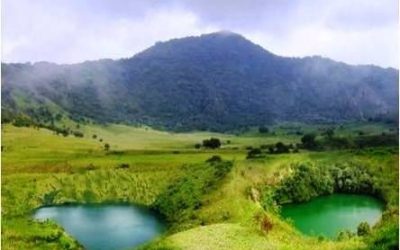
According to the Agroforestry Coordinator for the West and Littoral, Junie Chamjui, farmers took interest in planting more agroforestry trees after a series of transplanting workshops held at Haut-kam, Bamboutos, Menoua, and Moungo Divisions. The farmers were trained on value chain, grafting techniques, farm optimization model, composting, and practically on the transplanting of agroforestry seedlings.
“After the series of trainings we gave our farmers, many of them took interest in planting more trees. We transplanted 60500 acacia seedlings from their nursery sites to the new planting sites. Of the 60500 seedlings, 11500 were planted in Moungo,18500 in Bamboutos, 21000 in Menoua and 9500 in Haut-kam divisions,” Junie said
She expatiated on the importance of the tree planting exercise to the farmers.
“The seedlings, which occupy 0.7 ha of land, will increase crop production from 0.5 tonnes per hectare to 2tonnes, in three years. Besides soil improvement, the agroforestry trees will also serve as fuel wood to farmers, enhance honey production, serve as wind breaks, limit effect of erosion and provide additional income,” Junie added.

“I am new in the project, but very engaged because of the problem of poor soil fertility. I strongly believe with the introduction of these agroforestry trees, my soil will improve and my production will increase. In addition, the compost training was very good. My entire household garbage, except plastic, will be put inside the hole,” Kameni said.
Poor soil fertility, low yield, low level of knowledge on new agricultural practice and low income are outcomes of bad agricultural practices.
In order to boost agricultural productivity, farmers have often resorted to buying fertiliser sometimes without really knowing the long term effect of the fertiliser on the soil. The truth about fettiliser application is that the quantity of agricultural produce is always great during the first few years and then starts decreasing with the time because of destruction of nutrient in the arable soil and the change of substrate of the soil.
To solve this problem, the Environment and Rural Development Foundation (ERuDeF) with the support of Trees for the Future-USA has since 2007 been engaging farmers in the agroforestry system of farming. Here, they are engaged in the nursing and planting of nitrogen fixing trees like acacia; luceana and calliandra.



